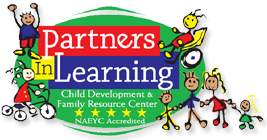 |
| "MOOO" |
Your toddler (1-2 years) should have a vocabulary of 50 or more words, learning more words each month. Your child should begin to put words together such as "more milk" and be asking questions with one to two words, "help please."
As your child approaches year three, they should have a word for most objects in their environment. Your child should be using one to three words to ask things, such as "more juice please." They should be saying two- to three-word sentences. You, as the parent, and other close people, should be able to understand the majority of what your child is trying to communicate.
Are you worried about your child meeting some of these milestones? Try some of these techniques to encourage your child's speech development!
- Constantly talk about what you are doing and about things in the environment "Mommy is rolling the ball to you, are you ready?" or "Do you see the red flower, it smells so good!" Exaggerate your emotions and point out things that you see, such as an airplane or animals.
- Teach your child animal sounds and match them to the correct animal, "That black and white cow says 'mooo'."
- Count everything; count steps as you go upstairs, count grapes as you feed your child, count fingers, etc.
- Expand on words your child says, such as "dog" -> "The dog is brown and says 'woof.'"
- Read to your child daily and have your child point out pictures in the book.
- Blow bubbles and encourage your child to say "Pop."
- Play with cars and make the sound "v-v-v-v-v-r-o-o-m." Exaggerate other sounds of toys.
- Ask your child questions that require a "yes" or "no" answer or one that require your child to make a choice, "apple or banana?"
 |
| Using music and a microphone to encourage speech!! |
 |
| Watching himself on video mode and introducing his stuffed animal friends - encourages speech!! |
If you are at all concerned about your child's speech, contact your pediatrician. You can also do more research, the American Speech-Language-Hearing Association (http://www.asha.org/) is a great resource for speech and language development!
Katie Zink, ITFS/P





No comments:
Post a Comment